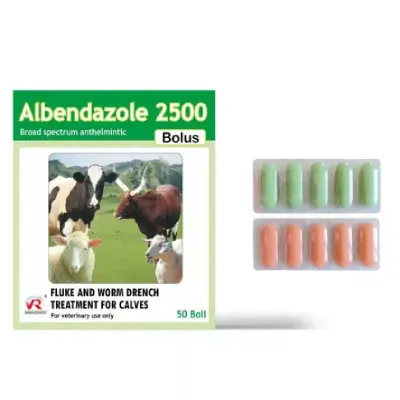- Afrikaans
- Albanian
- Amharic
- Arabic
- Armenian
- Azerbaijani
- Basque
- Belarusian
- Bengali
- Bosnian
- Bulgarian
- Catalan
- Cebuano
- Corsican
- Croatian
- Czech
- Danish
- Dutch
- English
- Esperanto
- Estonian
- Finnish
- French
- Frisian
- Galician
- Georgian
- German
- Greek
- Gujarati
- Haitian Creole
- hausa
- hawaiian
- Hebrew
- Hindi
- Miao
- Hungarian
- Icelandic
- igbo
- Indonesian
- irish
- Italian
- Japanese
- Javanese
- Kannada
- kazakh
- Khmer
- Rwandese
- Korean
- Kurdish
- Kyrgyz
- Lao
- Latin
- Latvian
- Lithuanian
- Luxembourgish
- Macedonian
- Malgashi
- Malay
- Malayalam
- Maltese
- Maori
- Marathi
- Mongolian
- Myanmar
- Nepali
- Norwegian
- Norwegian
- Occitan
- Pashto
- Persian
- Polish
- Portuguese
- Punjabi
- Romanian
- Russian
- Samoan
- Scottish Gaelic
- Serbian
- Sesotho
- Shona
- Sindhi
- Sinhala
- Slovak
- Slovenian
- Somali
- Spanish
- Sundanese
- Swahili
- Swedish
- Tagalog
- Tajik
- Tamil
- Tatar
- Telugu
- Thai
- Turkish
- Turkmen
- Ukrainian
- Urdu
- Uighur
- Uzbek
- Vietnamese
- Welsh
- Bantu
- Yiddish
- Yoruba
- Zulu
Nov . 11, 2024 12:46 Back to list
tylosin injection for poultry uses
Tylosin Injection for Poultry An Overview
Tylosin is a macrolide antibiotic frequently used in veterinary medicine, particularly in the poultry industry, to prevent and control bacterial infections. This article discusses the benefits, applications, and considerations associated with the use of tylosin injection for poultry.
What is Tylosin?
Tylosin is derived from the bacterium Streptomyces fradiae and is primarily used in veterinary medicine due to its effectiveness against various Gram-positive bacteria. It has a unique mechanism of action; it binds to the 50S ribosomal subunit of bacteria, inhibiting protein synthesis, which ultimately leads to the cessation of bacterial growth. Tylosin is known for its broad antimicrobial spectrum, making it an essential tool for poultry health management.
Applications in Poultry
In the poultry sector, tylosin is commonly administered through injectable forms, making it an effective option for rapid treatment. Its primary applications include
1. Treatment of Infections Tylosin is used to combat infections caused by Mycoplasma, a common pathogen in poultry. Mycoplasma infections can lead to respiratory issues, reduced feed efficiency, and overall decrease in productivity.
2. Prevention of Disease In addition to treatment, tylosin can be employed as a prophylactic measure to prevent outbreaks of bacterial diseases, particularly in young chicks that are more susceptible to infections.
3. Enhancement of Growth Research has indicated that tylosin can promote growth performance in poultry, leading to improved feed conversion ratios. This makes tylosin not only a therapeutic agent but also a growth promoter in many poultry production systems.
tylosin injection for poultry uses

Dosage and Administration
The administration of tylosin must be done judiciously. The typical dosage for poultry varies based on the condition being treated, the age of the birds, and the severity of the infection. Veterinarians often recommend a dosage that ranges from 10 to 25 mg per kg of body weight. It’s crucial for poultry producers to follow veterinary guidance to minimize the risk of antibiotic resistance and ensure the safety of the food supply.
Tylosin can be injected intramuscularly or subcutaneously, and the route of administration might depend on the scale of the poultry operation and the specific conditions being treated. Proper technique and hygiene during injection are essential to prevent localized infections and ensure maximum efficacy.
Safety and Withdrawal Times
One of the critical aspects of using tylosin in poultry is ensuring that withdrawal times are respected. This is the period post-treatment during which the meat and eggs of treated birds should not enter the food supply, to prevent antibiotic residues in human food. The established withdrawal period for tylosin is typically around 4 to 10 days, but this can vary based on the specific product and dosage used. Farmers must adhere strictly to these guidelines to promote food safety and public health.
Resistance Concerns
As with any antibiotic, the overuse or inappropriate use of tylosin raises concerns about the development of antibiotic-resistant bacteria. This is particularly relevant in the context of intensive poultry farming, where antibiotics are often used for growth promotion in addition to therapeutic purposes. Responsible usage, including rotating different classes of antibiotics and using tylosin only when necessary, is crucial in mitigating the risk of resistance.
Conclusion
Tylosin injection is a valuable asset in the poultry industry, providing effective means to manage bacterial infections, enhance growth, and promote overall poultry health. However, responsible usage, careful adherence to dosing guidelines, and respect for withdrawal times are crucial to ensure sustainable practices. Ongoing research and development are essential to refine its use and address the challenges of antibiotic resistance in veterinary medicine. Ultimately, the responsible application of tylosin can contribute significantly to the health of poultry flocks and the success of poultry production systems worldwide.
-
Guide to Oxytetracycline Injection
NewsMar.27,2025
-
Guide to Colistin Sulphate
NewsMar.27,2025
-
Gentamicin Sulfate: Uses, Price, And Key Information
NewsMar.27,2025
-
Enrofloxacin Injection: Uses, Price, And Supplier Information
NewsMar.27,2025
-
Dexamethasone Sodium Phosphate Injection: Uses, Price, And Key Information
NewsMar.27,2025
-
Albendazole Tablet: Uses, Dosage, Cost, And Key Information
NewsMar.27,2025













